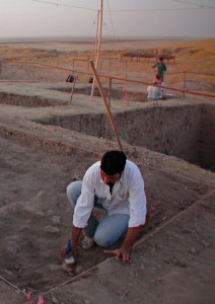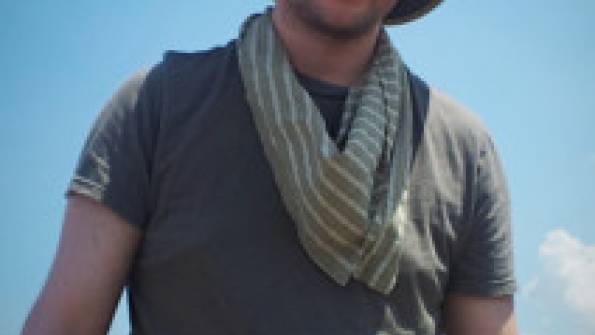Glass acts from an ancient world
Source: thestar.co.uk
It’s sharper than a scalpel, paved the way for one of the world’s earliest empires - and is now at the heart of pioneering research. Rachael Clegg talks to Dr Ellery Frahm about his discoveries. Dr. Ellery Frahm is on a mission. It’s a mission that involves a much-coveted natural material, Middle Eastern conflict, and world-leading research on the development of the globe’s very first civilisation.
Dr. Ellery Frahm is on a mission. It’s a mission that involves a much-coveted natural material, Middle Eastern conflict, and world-leading research on the development of the globe’s very first civilisation.Indiana Jones, eat your heart out. Ellery, aged 35, is an archaeologist from The University of Sheffield, and embarked on a trip to the Middle East that changed his understanding of human history.
His team’s research took them to Syria, where they found objects made from ‘obsidian’ - a naturally-occurring, blackish-coloured, volcanic glass that is sharper than a surgeon’s scalpel.
So sharp is this material that it was used as a tool in large-scale agriculture in what was then ancient Mesopotamia. This, in turn, allowed populations to grow - and civilisation, as we know it, to develop.
 “It was at that time, 2600BC, that societies were expanding,” says Ellery. “They were reaching a new level of complexity and states were starting to form in Southern Mesopotamia, which is now Iraq, and Northern Mesopotamia, which is now Syria.”
“It was at that time, 2600BC, that societies were expanding,” says Ellery. “They were reaching a new level of complexity and states were starting to form in Southern Mesopotamia, which is now Iraq, and Northern Mesopotamia, which is now Syria.”The glass objects are evidence of the very first trade networks that helped to define and develop the first civilisation - the Akkadian empire.
The dates of this glass - which would have been transported up to 1,000km - are from the height of the Akkadian empire.
“This is effectively the start of ancient globalisation, and this is material evidence that these states were trading with other parts of the world,” says Ellery.
The type of obsidian the objects were made from presented Ellery - from Broomhill - with a conundrum. Up to now, the last 50 years’ worth of research into obsidian suggested this type of glass shouldn’t be where Ellery found it - in Tell Mozan, Syria, near the Iraqi Turkish border.
No-one believed the ancient civilisations there had the means or knowledge to transport a material from central Turkey to modern day Syria. But they did.
And, better still, these unexpected objects were found at the site of a royal palace.
“They could have been presented as a gift or as a manifestation of a new ruler’s decision to establish authority in the area by surrounding themselves with symbols of status,” says Ellery.
“This is a rare, if not unique, discovery in Northern Mesopotamia that enables new insights into changing Bronze Age economics and geopolitics. We can identify where an obsidian artefact originated because each volcanic source has a distinctive ‘fingerprint’.
“This is why obsidian sourcing is a powerful means of reconstructing past trade routes, social boundaries, and other information that allows us to engage in major social science debates.”
But the importance of obsidian is underrated.
[...]
Read the full article at: thestar.co.uk






















